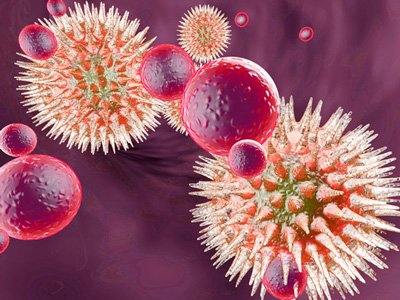First glimpse of an immature HIV-neutralising antibody
Posted: 6 April 2016 | Victoria White | 1 comment
Scientists have described the first-ever immature antibody found in a powerful class of immune molecules effective against HIV. TSRI biologist Jiang Zhu called the antibody a “teenager” and said it gives scientists a unique view of the steps needed to prompt the immune system to effectively target HIV…


Scientists have described the first-ever immature antibody found in a powerful class of immune molecules effective against HIV.
“This is actually the first example of how we can go back to the really early stage to see how this antibody lineage was born and can develop,” said TSRI biologist Jiang Zhu. Scientists at the Scripps Research Institute (TSRI) led the study.
The new knowledge of the evolution and key traits of anti-HIV antibodies could help researchers design a vaccine to prevent AIDS.
HIV has been hard to beat because the virus mutates rapidly and has a sturdy set of defences – including a “shield” of glycan molecules on the surface of its envelope glycoproteins. These glycoproteins are the viral machinery used to make initial contact and subsequently infect human host cells.
Reverse engineering vaccine candidates
Because HIV presents such a challenge to the immune system, scientists can’t use traditional methods to create a vaccine. Instead, Zhu explained, they have to “reverse engineer” the right vaccine candidates using rare effective antibodies from HIV-positive patients as guides.
The antibody in the new study came from a patient in China who was what scientists call an “elite” controller, meaning the patient’s immune system had managed to create antibodies with some ability to fight the disease. The patient was among the top 5 percent of neutralisers assessed in a screening of hundreds of Chinese HIV patients by China CDC scientists.
Genetically, the antibody found in this donor resembled members of the VRC01 class of antibodies, which are “broadly neutralising antibodies,” named for their ability to target a key site of vulnerability on many strains of the virus.
Yet the new antibody also lacked one of the key structural traits of VRC01 antibodies. Further studies into the antibody’s genetics and structure showed that it was a precursor to mature VRC01 antibodies – in other words, it represented a middle stage in the evolution of this class of HIV killers.
Zhu called the antibody a “teenager” and said it gives scientists a unique view of the steps needed to prompt the immune system to effectively target HIV.
The researchers studied samples taken from the patient over five years, starting in 2006 when Zhu said the antibody was a “toddler.” Each sample showed the antibody in a different stage of development, giving researchers a possible guide for how to elicit these antibodies with a vaccine.
Zhu and his colleagues were surprised to find that the antibody evolved rapidly between 2006 and 2008, gaining many of the traits it would need to fight HIV. This finding contradicts previous studies suggesting that it can take up to 10 to 15 years for VRC01 antibodies to develop useful traits.
“Now we know these specialised antibodies can evolve in just one or two years,” said TSRI Research Associate Yajing Chen.
Immature antibody tweaked to make a broadly neutralising antibody
Zhu said this discovery is encouraging, since an HIV vaccine will also need to prompt the body to make antibodies quickly.
The scientists also spotted a hurdle they will have to overcome as they engineer their own antibodies: The teenage VRC01 has a slightly longer amino acid chain at one site than the mature version, and this chain clashes with part of the glycoprotein shield (gp120) on HIV and prevents the antibody from effectively neutralising the virus.
The researchers managed to tweak the immature antibody to make it into a broadly neutralising antibody. “As long as you have some of those VRC01 signatures, a teenage-stage antibody can become a killer for HIV,” said Zhu.
Related topics
Antibodies
Related conditions
HIV
Related organisations
The Scripps Research Institute (TSRI)




That’s quite a inspiring news for antibody engineering!